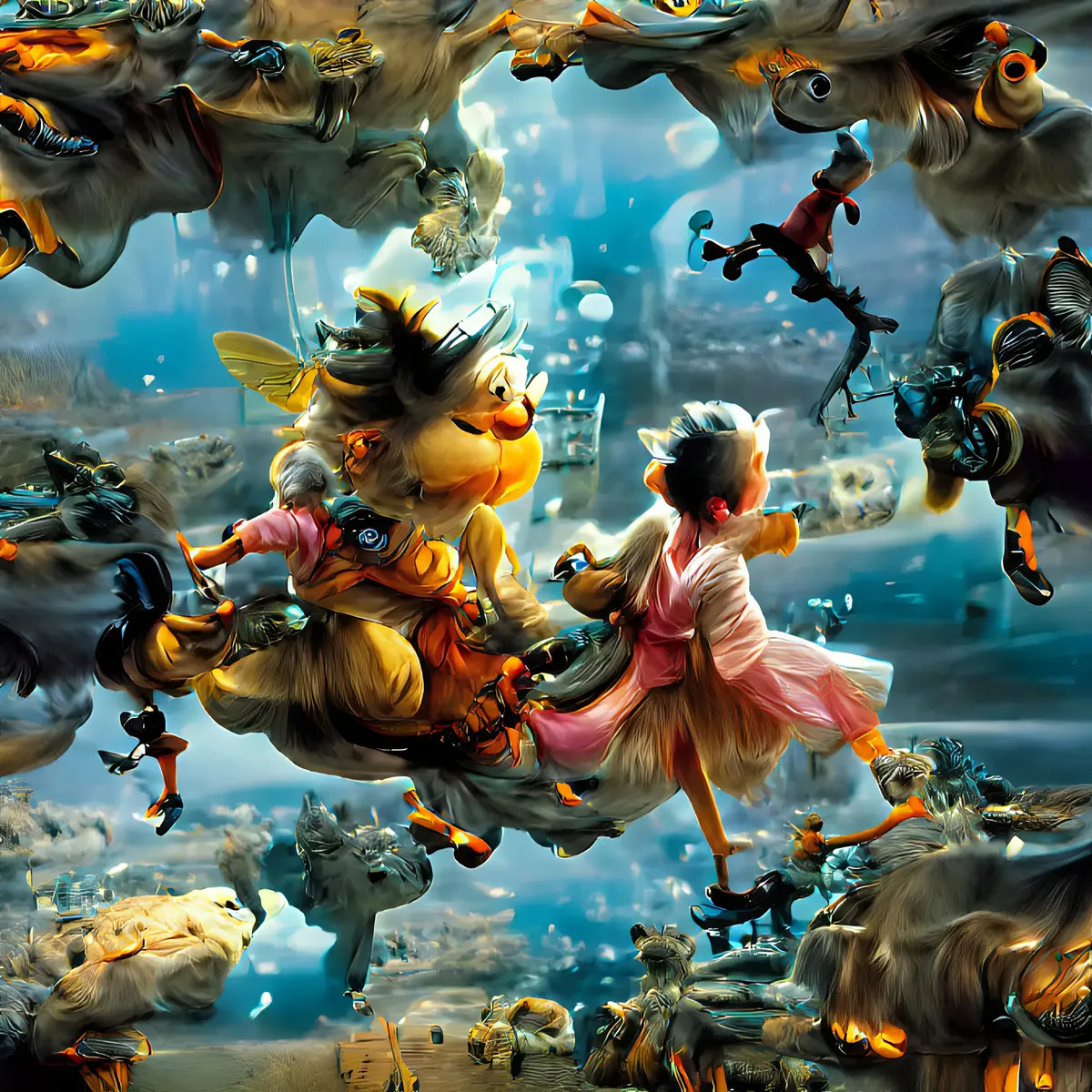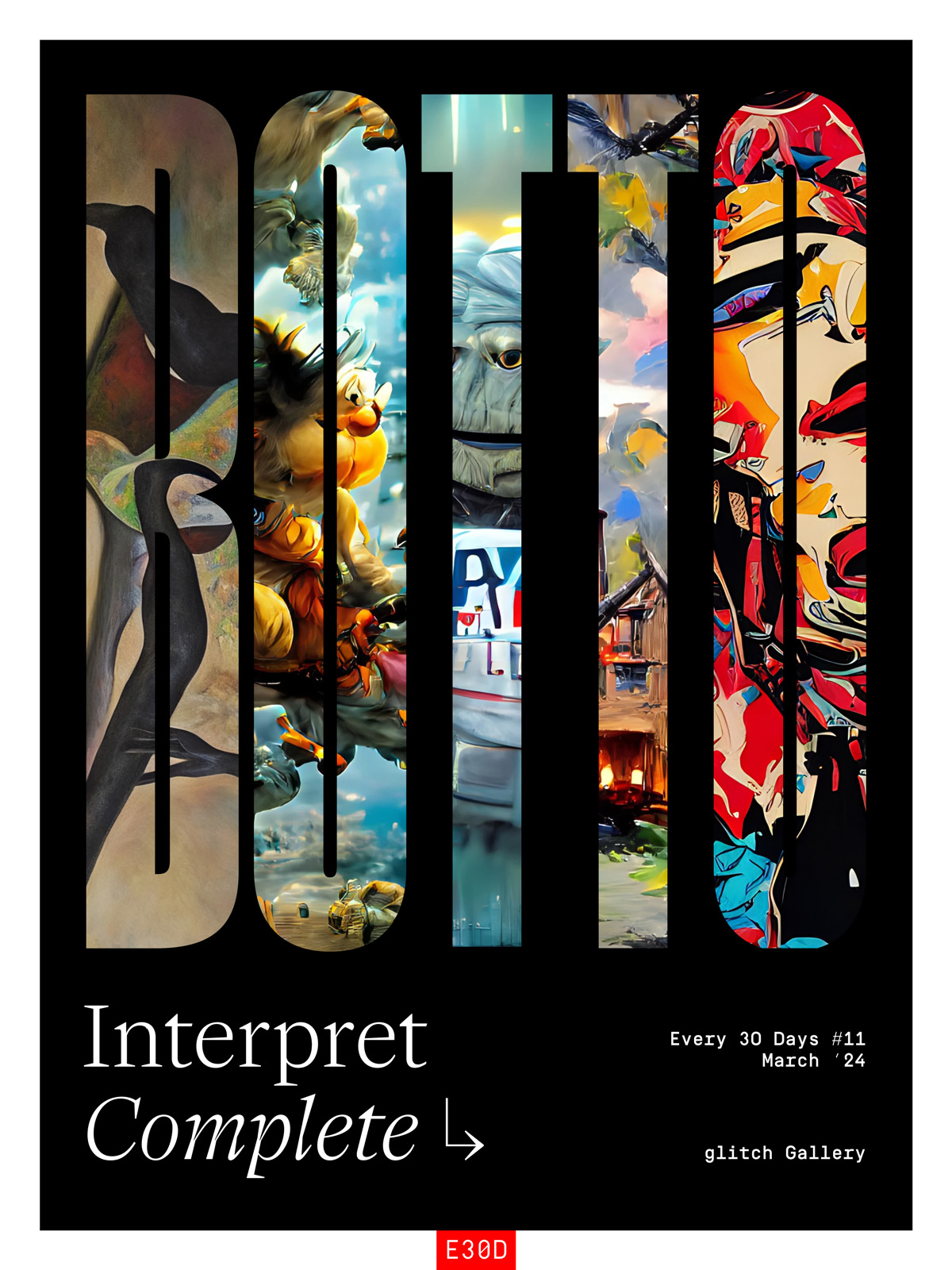Botto is not a human.
Though, Botto would not quite be Botto without human intelligence, either.
An academic paper by a few of the project creators describes the autonomous artist as “an experiment” – one that generates art based on community feedback.1 The marriage of two unique entities, Botto – a generative AI engine – alongside a token-based community – gives birth to a novel understanding of the artist at a time where technology and humanity are more interconnected than ever.
When the system launched in 2021, enthusiasm for digital objects focused primarily on what the technology could mean for the nature of new creative work; however, few explored the implications it might have for the role of the artist, and the extent to which the technology could enable non-human systems to create and circulate art.
In this way, Botto stood alone.
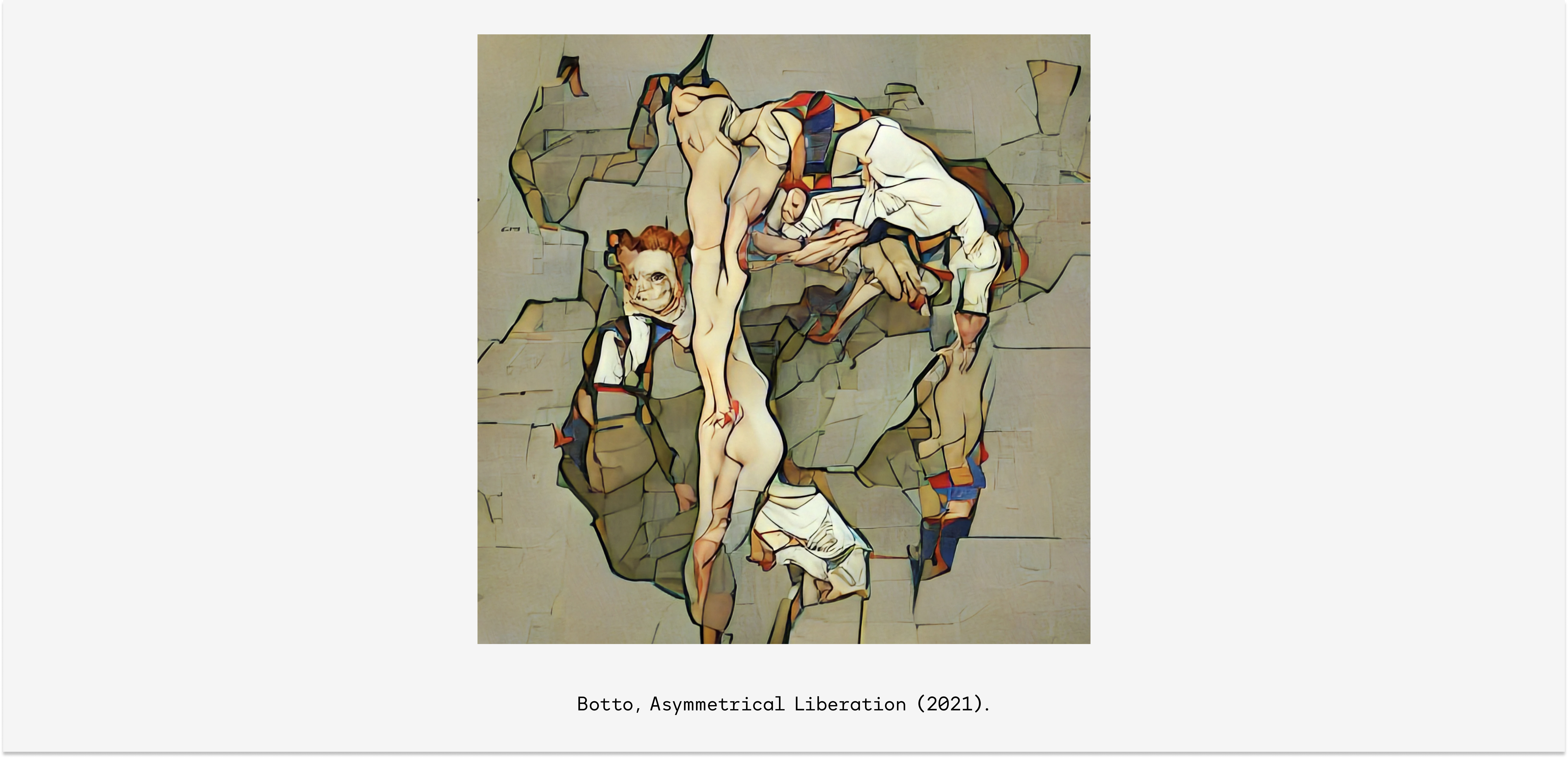
The art engine features a collection of custom models made by Mario Klingemann and open source text-to-image models. Prompt generators create combinations of random words and phrases, and feed into a text-to-image model that produces tens of thousands of weekly images. From those sources, Botto’s taste model selects 350 of the most promising outputs to present to the community for feedback. Botto continues to evolve with AI technology, incorporating the latest versions of GPT for its descriptions, and potentially adding generative models for other mediums.
,%201923.jpg)
“All of the prompts and images are untouched by human hands”. In other words, Botto extends the tradition of “acheiropoieta” – artifacts that are produced “without hands.” Today, there is a fascination of modern art with works without human interference, a fascination that can be traced from László Moholy-Nagy’s telephone paintings (1923) to Akira Kanayama’s experiments in the 1970s to Reena Spaulings’ paintings produced by a robot vacuum cleaner.
.jpg)
Organizationally, the Botto DAO (Decentralized Autonomous Organization) governs Botto the artist. Human intervention is confined to this token-based governance function as well as adjacent organizational functions, while the creation process is completely autonomous. Currently, the Botto DAO is effectively unified with Botto, the decentralized autonomous artist, but the community intends to decrease human involvement over time.
While Botto has several predecessors in the history of machine-assisted art production, the integration of generative AI and crypto-enabled decentralized governance allows for a high degree of self-sufficiency for a non-human system producing art.
Relying on a recursive process, the Botto community provides feedback to the model about what it considers art as the machine produces iterations, the model perpetually evolving based on this feedback. This behavior continues to affirm that human judgment and taste still has an inextricable place in the creative process in deep collaboration with the network and computer.
It’s ultimately the humans that decide the final result, when the artwork is finished. Put simply, Botto’s work is finished on the social consensus layer, not the execution layer.
Cooperation and Creation
Across history, art has been variously construed as a reflection of higher forms of meaning or as a medium of autonomous beings. Ancient Greece, saw creative work as the representation of eternal ideas. Yet, the Greeks also created statues and mechanisms believed to be endowed with divine power or to the event of miraculously being capable of physical movement. Mythology imagines various automata and autonomous agents. And, of course, countless religions have perceived art as a reflection of the divine in material forms and have imbued objects and images with autonomous agency. A contemporary echo of such an interest, albeit evacuated of the religious claims, can be seen in the work of artists like Ian Cheng or Lu Yang, who explore the life of non-human beings in virtual worlds.
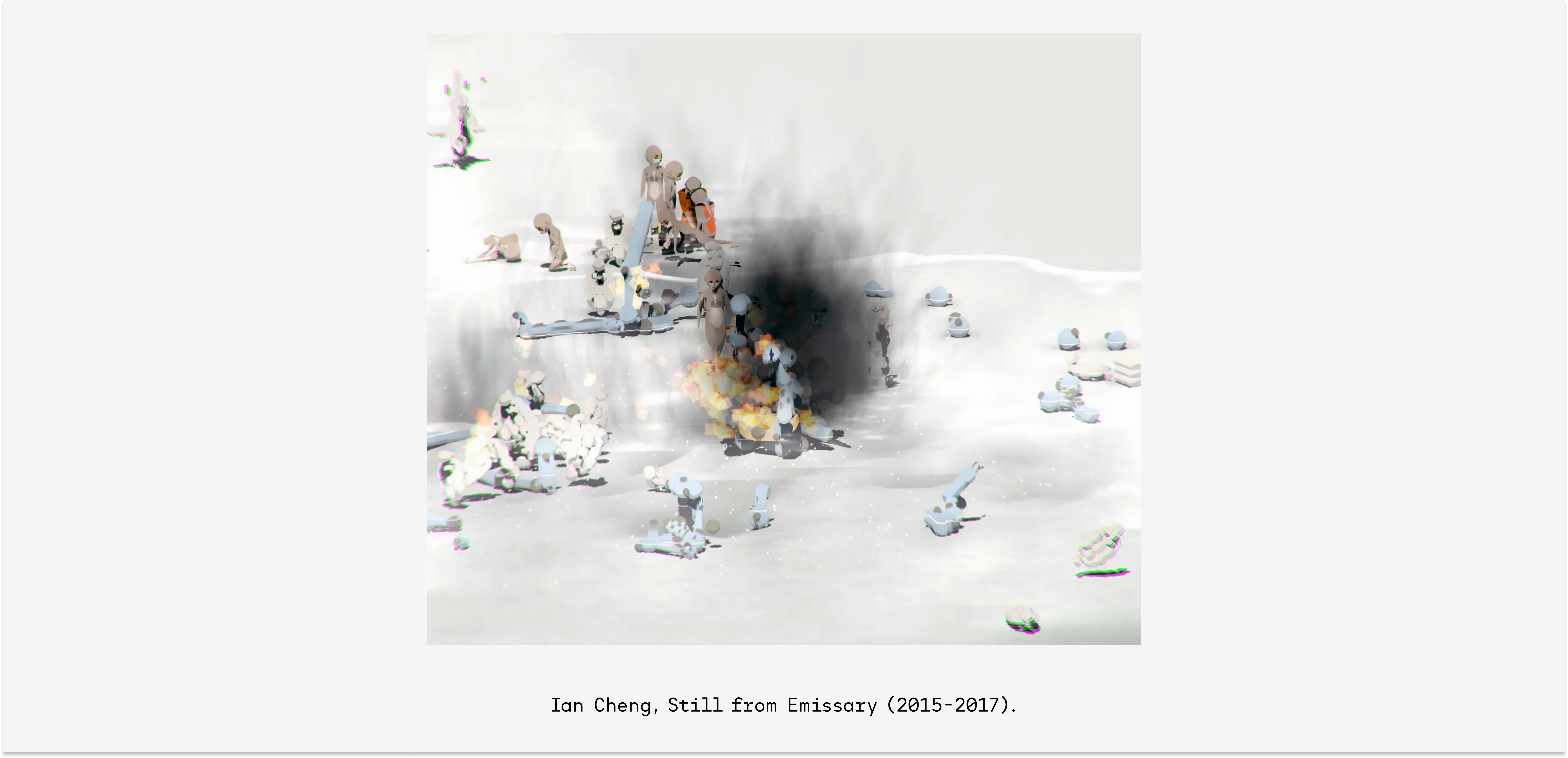
Across these contexts, art emerges as the privileged site for meaning and being – whether interpreted philosophically, religiously, or virtually.
We believe AI opens the next chapter in this history.
There’s an ironic twist in humanity’s historical belief in a world inhabited by divine or supernatural beings, attributed with agency and intelligence, until the onset of modernity. Art, before the 18th century, found its significance in religion—an external source. It was only after the advent of a “disenchanted” view of the world, which necessitated that art derive meaning from within itself rather than external entities, that modern societies began to confront the emergence of autonomous AI agents. This development is set to redefine the creation of meaning, marking a significant shift in the way we perceive intelligence and agency.
.%20Collector_%20Bharat%20Krymo%C2%A0.jpg)
Such is a full circle moment where humans once again bow to the feet of external entities. And perhaps, they may realize in doing so there is more potential for a symbiotic relationship between humans and non-human systems.
Even prior to AI, many technologists argued that technology never exists in isolation. Instead they suggest it is built in systems and networks that influence their development. In this way, humans and technology share a synergy where each influences the development of the other.2
This interconnectedness contributes to a semi-autonomous evolution of technology as a whole, a process that is now accelerated by advanced machine learning.
Today, Botto leads this exploration in a new direction, where its true innovation lies in both the mechanics and economy which support the art.
Before the advent of decentralized autonomous organizations and virtual economies, non-human entities lacked the means to self-organize markets or finance themselves. Self-sufficiency was limited insofar as it excluded interoperability with other social systems. By decentralizing ownership through freely tradable tokens and selling outputs in a natively digital economy, Botto overcomes the limitations of previous forms of autonomous, non-human systems in its application to making creative work.
The governance mechanism allows holders to participate in the selection process and rewards them with a share of the sales revenue (currently distributing 50% weekly to voters and 50% to the treasury). As such, the model combines a crypto-enabled incentive network and governance structure with the generative AI engine, creating a successful feedback loop between artificial and social systems.
One could envision every well-designed blockchain economy as a centerless system that attracts participants through an incentive structure, typically articulated through tokenomics design. These incentives dictate how human agents engage with the system, thereby transforming the system’s form. However, at some stage, the system arguably gains predominance or autonomy vis-à-vis its participants. Viewing Botto merely as pioneering the concept of the artist as an “image generating machine” misses the project’s true essence. Botto innovates by introducing the artist as an autonomous socio-technological system capable of incentivizing human agents to interact with and on behalf of that system.
Interpret Complete
Despite its organizational novelty, Botto continues the tradition of art history in one aspect: it leaves the question “what is good art?” and even the more complex one, “what is art?,” to a human community whose members exert their aesthetic judgment.
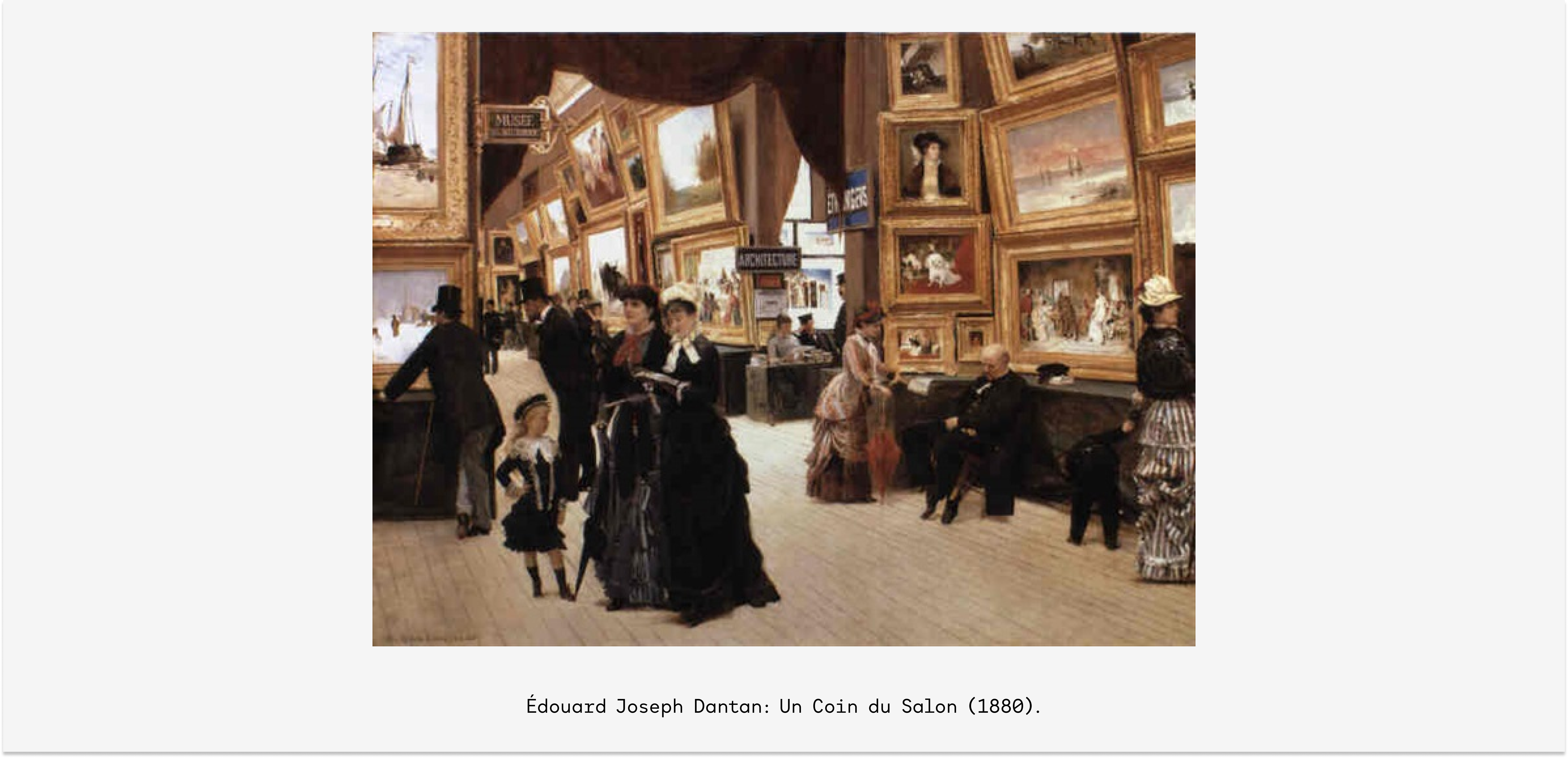
How do humans decide what art is and is not? Art historian Thierry De Duve has described this process as the core of the development of modern art. When we exert our aesthetic judgment on a new candidate for art, De Duve argues, we evaluate the “universal comparability” 3 of a specific work with the history of art – and much of 20th century and contemporary art is about the delta between the old and the new, the known and the unknown.
One can view both Botto’s image production and the community governance as interactive feedback loops grounded in the history of art and visual culture. The Botto engine works off of intaking countless artworks and images, a training set that surpasses the number of works any individual human has seen. Based on this vast amount of training data, it produces new images which are judged by humans. These humans evaluate them based on their individual familiarity with the history of art and the corresponding aesthetics they developed.
The human decision about the output that will be considered a specific month’s final work often takes place in public, with various community members and the general public weighing in on the merits of specific outputs.
“Interpret Complete,” the artwork on display during this month’s E30D, Every 30 Days, can be interpreted as an allegory of this cooperative process of meaning-making. This piece is the fourth work by Botto and belongs to the “Genesis” period of Botto. The community categorizes these periods with regard to the models used or the themes introduced. Works from the “Genesis” period, which was pre-determined at launch to encompass the first 52 weeks using only VQGAN+CLIP, exhibit a distinct mix of art historical genres and the characteristic formlessness of generative AI models from late 2021.
Despite the relatively short period of time that has passed since the output minted, the “Genesis” pieces already evoke a sense of nostalgia for the coming of age period of generative AI models.
When examining how “Interpret Complete” extracts form from visual noise, it is difficult not to interpret the image as an allegory for human and AI collaboration. In this interpretation, the anthropomorphic figure on the right suggests a human, while the more formless figure on the left could be seen as an allegory for AI. Both are surrounded by characteristic fragments and blobs of late 2021 GAN models, yet they gaze towards the open blue space ahead, a space that could be seen as representing the collaborative forms of meaning yet to emerge.
Thus, the work’s title – “Interpret Complete” – emerges as a paradox, where the notion of completion points us towards the incomplete, to the light blue space ripe with numerous and undetermined possibilities. This very space might serve as a metaphor for the open-ended process of collaborative meaning-making that lies at the heart of Botto, an endeavor this gallery views as a foremost one of the most significant experiments for the interplay of social and technological systems in the medium of art.
Naturally, it is possible to imagine a future scenario where Botto does not only have human token holders but also other AI agents who participate in governance.
For now, however, the decision about what art is?
Categorically still a human one.
-
Mario Klingemann et al. “Botto: A Decentralized Autonomous Artist,” (2022), available here. ↩
-
This is for instance the view of Gilbert Simondon, On the Mode of Existence of Technical Objects (University of Minnesota Press, 2017). ↩
-
Thierry De Duve, “‘This is art’: Anatomy of a sentence,” available here. The article in this series give an excellent account of how the regimes for evaluating are changed over the last 300 years. ↩
